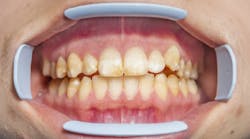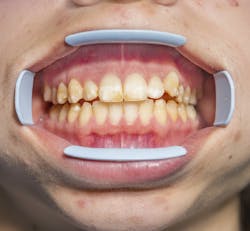The "Hygiene Message in a Bottle Mailbag" is a monthly feature of the e-newsletter, Pearls for Your Practice: The Product Navigator. Each month, Colleen Olson, RDH, BBA, the editorial director of the Hygiene Product Navigator, will answer reader-submitted questions to help you navigate your dental hygiene product decisions (and more!). This month, she discusses whether fluoride varnish is recommended for patients with fluorosis.
Sherry, RDH, asked: Is fluoride varnish recommended for patients with fluorosis? Thank you!
Answer:
Thanks for the question, Sherry!
According to the American Academy of Pediatric Dentistry’s Guideline on Fluoride Therapy, “Decisions concerning the administration of fluoride are based on the unique needs of each patient, including the risks and benefits (i.e., risk of mild or moderate fluorosis versus the benefits of decreasing caries increment and, in some cases preventing, devastating dental disease).” (1) As we know, fluorosis occurs when developing enamel is exposed to excessive quantities of fluoride. Most cases of fluorosis occur from ingestion of too much fluoride, whether by fluoride supplements, overfluoridated drinking water, fluoridated toothpaste, or some combination of these. The risk of developing fluorosis is greatest before eight years of age, when the teeth are developing and enamel is being mineralized. (2) Of course, we do not know if a patient has dental fluorosis until the teeth erupt. When treating patients younger than eight years of age, clinicians should counsel caregivers on fluoride supplementation after considering the level of fluoride in the drinking water in that area. Parents should also be directed about the proper use of fluoride toothpaste for young children in order to avoid overconsumption. The American Dental Association's fluoride toothpaste recommendations are a smear the size of a grain of rice for children under three years of age and a small, pea-sized amount for children three to six years old. (3)
When applying fluoride varnishes, clinicians focus on patients with moderate to high caries risk. While each patient has different host and home-care factors, many patients with fluorosis are less susceptible to decay due to the overabundance of fluoride.
In the end, adolescent and adult patients with fluorosis may have low risk of decay and may not require fluoride varnish or an in-office treatment. However, this decision should be made on a case-by-case basis, and if the patient exhibits moderate or high caries risk, there is no additional risk of fluorosis by performing a topical fluoride varnish.
References
1. Liason with Other Groups Committee. Guideline on fluoride therapy. American Academy of Pediatric Dentistry Clinical Practice Guidelines. 2015/2016;37(6):176-179. http://www.aapd.org/media/Policies_Guidelines/G_fluoridetherapy.pdf.
2. Clark MB, Slayton RL, Section on Oral Health. Fluoride use in caries prevention in the primary care setting. Pediatrics. 2014;134(3):626-633. http://pediatrics.aappublications.org/content/134/3/626.long.
3. Fluoride and infant formula FAQ. American Dental Association website. http://www.ada.org/en/public-programs/advocating-for-the-public/fluoride-and-fluoridation/recent-fluoridation-issues/infant-formula-and-fluoridated-water/fluoride-and-infant-formula-faq.
Editor's Note: Do you have a question for Colleen? Is there a product you'd like to see her review? Or would you like to submit your own hygiene product "Pearl"? Send an email to [email protected]. You might just see it in the Hygiene Product Navigator! If you're not a Product Navigator subscriber, click here to sign up.
More reading
October 2016 | Prophy paste grit and its effects on enamel
September 2016 | Arestin versus PerioChip
August 2016 | Optimal water pressure for subgingival and supramarginal irrigation








